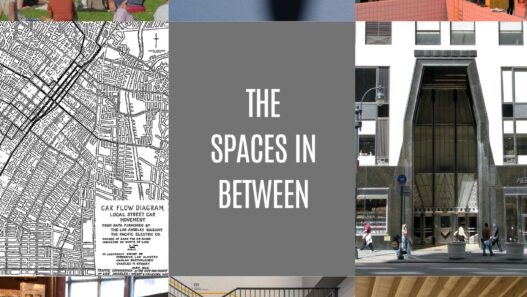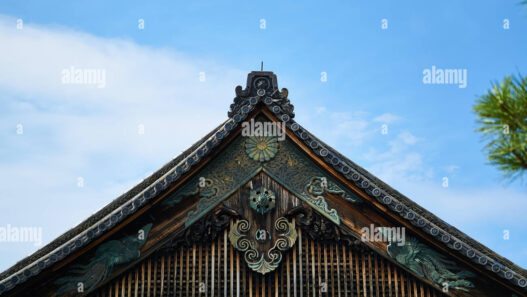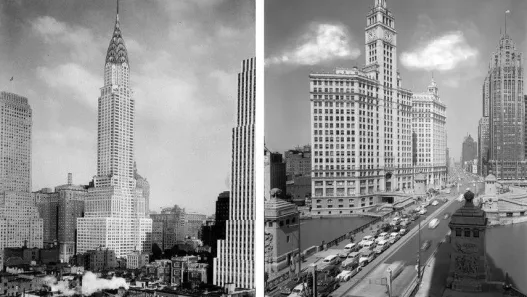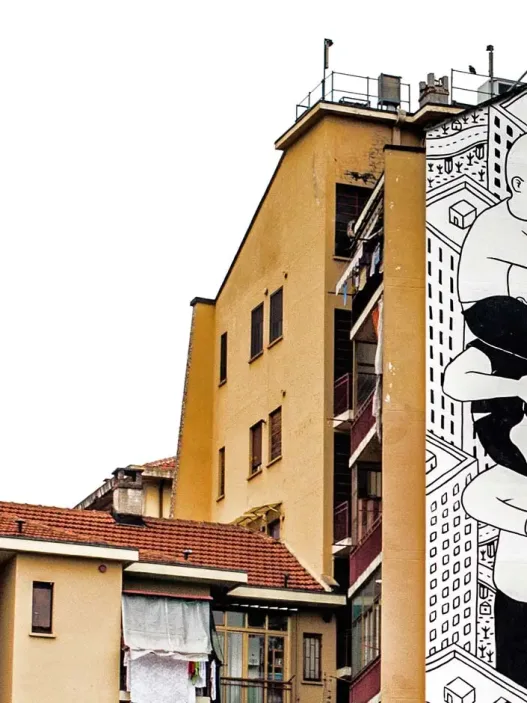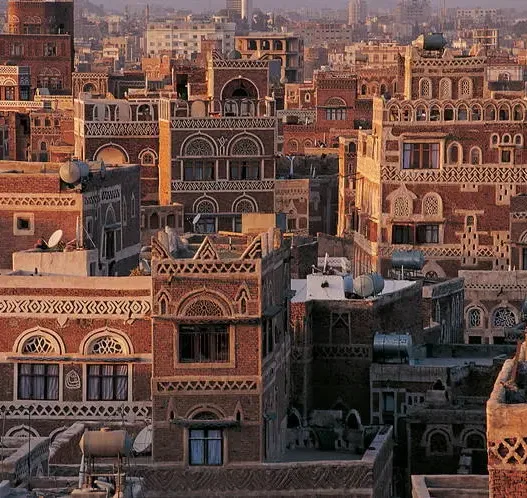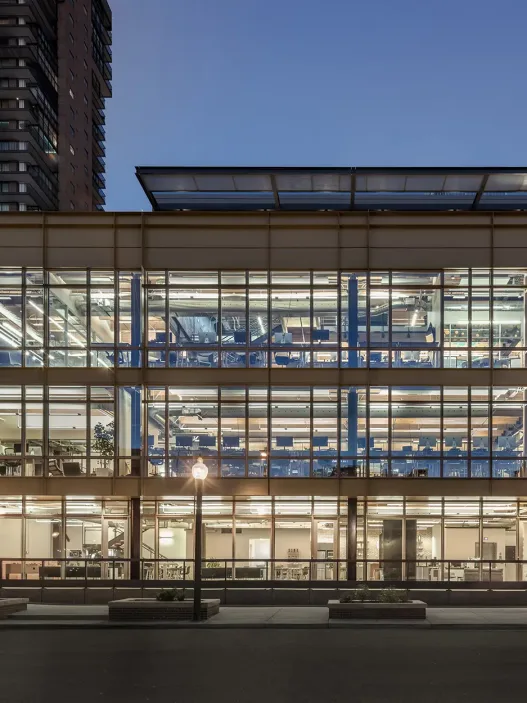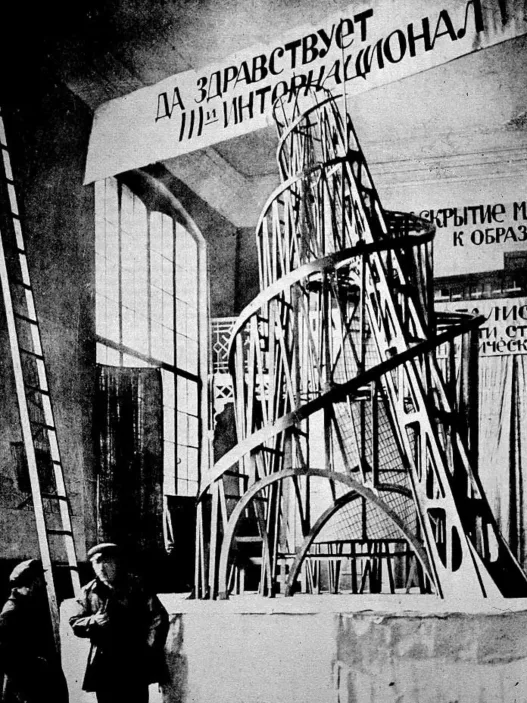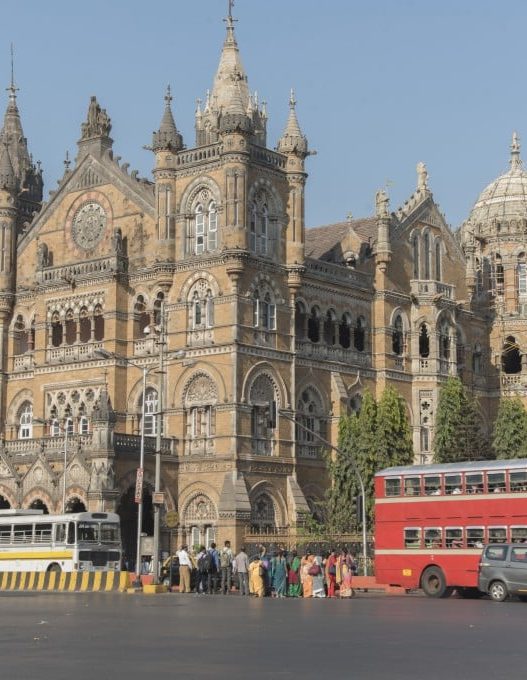The 1920s was a transformative decade that left an indelible mark on the architectural landscape of cities around the world. Emerging from the shadow of the First World War, this period was characterised by a sense of optimism and a desire for innovation. As societies adapted to new social norms and economic realities, architecture became a canvas for expressing modernity, progress and the aspirations of a new era. This period witnessed the rise of various architectural styles that not only defined the aesthetics of their time, but also laid the groundwork for future urban development.

Period Overview
Often referred to as the “Roaring Twenties”, the 1920s was a period of significant social change and cultural experimentation. Cities developed as people flocked to urban areas in search of work and opportunity, leading to rapid urbanisation and the need for new infrastructure. The decade was marked by a fervent embrace of modernism, as architects sought to break away from historic styles and traditions. The rise of the automobile and advances in construction techniques allowed for greater creativity and innovation in architectural design, resulting in iconic buildings that still resonate today.
Key Architectural Styles
A variety of architectural styles emerged in the 1920s, each reflecting the distinctive spirit of the time. Art Deco, with its bold geometric shapes and vibrant colours, became the dominant aesthetic, symbolising luxury and modernity. This style found its way into skyscrapers, theatres and residences and was characterised by intricate detailing and a sense of grandeur. Meanwhile, the International Style, emphasising minimalism and functionality, began to take shape. Buildings in this style had clean lines, open spaces, and an absence of ornamentation, favouring a vision of efficiency and rationality.
Another notable style was the Prairie School, which emphasised harmony with the surrounding landscape. This approach, often seen in the work of Frank Lloyd Wright, reflected a desire for a more organic connection with the environment, with a focus on horizontal lines and integration with nature. Each of these styles has contributed to the rich tapestry of urban architecture, influencing not only how buildings look, but also how they function in the urban context.
Influence of Historical Events
The historical background of the 1920s profoundly influenced architectural trends. In the aftermath of the First World War, a longing for peace and stability emerged, which architects sought to embody in their designs. The economic boom of the decade fuelled construction and urban development, leading to the proliferation of skyscrapers and public buildings that represented progress and prosperity. The rise of the automobile also changed urban planning, leading to the creation of wide boulevards and the need for parking spaces.
Moreover, the cultural changes of the period, such as the women’s suffrage movement and the Harlem Renaissance, instilled new ideas and perspectives in architecture. These movements challenged traditional norms and inspired architects to create spaces that were inclusive and reflective of diverse communities. As cities expanded and developed, architecture became a means of expressing the hopes and dreams of a rapidly changing society.
Important Architects of the 1920s
The 1920s was a prolific period for many architects who would shape the future of urban design. Names such as William Van Alen, who designed the Chrysler Building in New York, exemplified the Art Deco style with its soaring tower and intricate ornamentation. Meanwhile, Le Corbusier, a pioneer of modern architecture, introduced innovative concepts such as the “Five Points of the New Architecture”, which encouraged functionality and the integration of nature into design.
Other notable architects included Frank Lloyd Wright, whose Prairie School designs emphasised organic architecture, and Richard Neutra, known for his use of glass and open space to create harmony between indoor and outdoor environments. Each of these architects has contributed to a rich dialogue about what modern architecture can be, pushing boundaries and inspiring future generations.
Technological Advances
Technological innovations played a crucial role in the architectural developments of the 1920s. The introduction of reinforced concrete and steel construction allowed for taller buildings and more ambitious designs. This change enabled architects to explore new forms and create previously unimaginable structures. The widespread use of elevators facilitated the development of skyscrapers and changed the way people experience vertical space.
In addition, advances in materials and construction methods, such as the widespread use of glass, have changed the way buildings interact with their surroundings. Large windows and open floor plans have become hallmarks of modern design, bringing natural light into spaces and blurring the lines between indoor and outdoor living. These technological advances not only influenced aesthetics, but also redefined how cities were built and experienced, paving the way for the urban landscapes we navigate today.
Through its innovative styles, influential architects and important historical context, the architecture of the 1920s laid the foundation for the modern cityscape. Its legacy continues to inspire and inform architectural practice, reminding us of the power of design to reflect and shape the world around us.
Coinciding with the profound social and cultural changes following the First World War, the 1920s marked a transformative period in architectural design. As cities began to expand rapidly, architects embraced new materials and technologies, pioneering innovative buildings that not only defined the skyline but also influenced the principles of urban planning and design for generations. The architecture of this period reflected the spirit of modernism by combining functionality with artistic expression, ultimately shaping the modern cityscape we recognise today.
Iconic Buildings of the 1920s
The 1920s produced a remarkable array of iconic buildings reflecting the ambitions and aspirations of the period. These structures often combined elegance with practicality, demonstrating advances in engineering and construction. Let’s explore some of these architectural masterpieces that continue to inspire and influence contemporary design.
Chrysler Building
Completed in 1930, the Chrysler Building exemplifies the Art Deco style that became synonymous with the 1920s. Designed by William Van Alen, the skyscraper was originally commissioned by Walter P. Chrysler, founder of the Chrysler Corporation. Its distinctive features include a gleaming stainless steel tower and intricate ornamentation such as eagles and hubcaps that pay homage to the automobile industry.
The building’s height and silhouette were revolutionary for its time and symbolised the optimism and enthusiasm of the era. The Chrysler Building was not just an office space; it became a beacon of the New York skyline, representing human creativity and the emerging American spirit. Its architectural brilliance continues to attract visitors and serves as a testament to the artistic vision of the era.
Empire State Building
Another hallmark of 1920s architecture is the Empire State Building, completed in 1931. Designed by a team led by Shreve, Lamb & Harmon, it epitomises the skyscraper as an American architectural icon. With a height of almost 1,000 metres, it reigned for almost a century as the tallest building in the world, a symbol of ambition and the technological prowess of the time.
The design of the Empire State Building incorporates elements of Art Deco, characterised by its sleek lines and geometric forms. The observation decks offer breathtaking views of the city and attract millions of visitors every year. The building’s prominence in New York and its numerous film and media appearances cement its status as a cultural icon, representing not only architectural achievement but also the dreams of a society looking to the future.
Casa Batlló
While the Chrysler and Empire State buildings are quintessentially American, Casa Batlló in Barcelona, Spain, showcases the unique contributions of European architects to the architectural milieu of the 1920s. Designed by Antoni Gaudí, this residential building is one of the most important examples of Modernisme, a style that blends organic forms with intricate craftsmanship. Completed in the 1920s but extensively renovated, Casa Batlló features a facade decorated with colourful mosaics and a roof that resembles the back of a dragon.
Gaudí’s approach to architecture used curved lines and vibrant colours to create a whimsical yet functional space, emphasising harmony with nature. Casa Batlló stands out not only for its aesthetic appeal, but also for its innovative use of light and space, showing how architecture can be both beautiful and habitable. This building inspires architects worldwide, emphasising the importance of creativity in urban design.
Palais de Chaillot
Overlooking the Seine River in Paris, the Palais de Chaillot is a striking example of the 1920s architectural movement in France. Built for the International Exhibition, it was designed by architects Louis-Hippolyte Boileau, Jacques Carlu and Léon Azéma. The building embodies the principles of modernist architecture with its clean lines and symmetrical layout.
The Palais de Chaillot has become an important part of the artistic landscape of Paris, hosting many museums and cultural institutions. Its terraces offer spectacular views of the Eiffel Tower, while its grand staircase and open spaces encourage public participation. The building reflects the era’s emphasis on cultural expression and the role of architecture in fostering civic life and demonstrates how design can encourage social interaction.
Chicago Tribune Tower
The Chicago Tribune Tower in Chicago stands as a testament to the city’s architectural innovation in the 1920s. Designed by John Mead Howells and Raymond Hood, the tower was completed in the 1920s as the headquarters of the Chicago Tribune newspaper. Its neo-Gothic style, with its intricate stone carvings and soaring spire, creates a dramatic presence on the city’s skyline.
What makes Tribune Tower particularly fascinating is that it incorporates stones from famous buildings around the world, symbolising a connection to global history and culture. This building serves not only as a functional office space, but also as a monument to journalistic freedom and the importance of the press in society. The Chicago Tribune Tower has inspired countless architects and remains a beloved part of Chicago’s architectural heritage.
In sum, the architecture of the 1920s was not just about building buildings; it was about shaping the identity of modern cities. Each of these iconic buildings tells a story of innovation, cultural values and the human desire to reach new heights, both literally and figuratively. As we continue to build the cities of tomorrow, the legacy of the 1920s reminds us of the power of architecture to influence our lives and societies.
The 1920s marked a transformative period in the history of architecture, laying the foundations for the modern cityscape we navigate today. Amidst post-World War I optimism, rapid urbanisation and technological progress, architects began to explore new design philosophies that embraced both aesthetics and functionality. This period gave birth to iconic styles that not only reflected the aspirations and lifestyles of the time, but also influenced urban planning and architectural practice for decades to come.
Design Principles and Characteristics
The architecture of the 1920s was characterised by a mix of innovative design principles, each contributing to a distinctive urban environment. These principles were not just about how buildings looked; they epitomised the spirit of a generation eager to break free from traditional constraints and embrace the future. The interplay of style, function and the materials available at the time shaped the iconic skyline of cities around the world.
Art Deco Elements
One of the most recognisable styles of the 1920s is Art Deco, which emerged as a celebration of modernity and luxury. Art Deco is characterised by geometric shapes, bold colours and intricate ornamentation. Buildings such as the Chrysler Building in New York exemplify this style, displaying a dazzling silhouette punctuated by a distinctive spire. The use of zigzag patterns, chevrons and stylised floral motifs reflected the optimism of the Jazz Age, symbolising progress and innovation. This movement not only influenced architecture, but also permeated design fields such as fashion, graphic design and interior decoration, creating a cohesive cultural aesthetic celebrating the new era.
Streamline Moderne Aesthetics
As the decade progressed, the Streamline Moderne style emerged, emphasising soft curves and streamlined shapes. This design approach was inspired by advances in technology, particularly in transport. Buildings such as the New York Port Authority Bus Terminal demonstrated this trend, with its sleek lines reminiscent of the aerodynamics of automotive and aviation design. Streamline Moderne’s aesthetic was all about speed and efficiency, capturing the spirit of a society fascinated by movement and progress. This style brought a sense of modernity to urban landscapes, showing how architecture can encompass the dynamism of the age.
Functionality in Design
In addition to these stylistic movements, Functionalism began to attract attention as a guiding principle in architecture. This philosophy prioritised practicality over excessive ornamentation by focusing on the intended use of spaces. Architects such as Le Corbusier championed this idea and promoted designs that improved the quality of life of urban dwellers. Buildings were designed with an emphasis on spatial efficiency and the needs of the people who lived and worked in them. This shift towards functional design paved the way for modernist architecture, where the form of a building was determined by its function, and paved the way for a more utilitarian approach in later architectural developments.
Use of New Materials
The 1920s also witnessed significant developments in construction materials, revolutionising the way buildings were designed and constructed. The introduction of reinforced concrete and steel frames led to taller, more durable structures. This allowed architects to push the limits of height and create new possibilities for urban design. The iconic skyscrapers that emerged during this period, such as the Empire State Building, showcased not only the aesthetic appeal of these materials, but also their structural integrity. This evolution in materials facilitated the rise of modern cities, where vertical growth became a defining feature of urban environments.
Emphasis on ornamentation
Despite the popularity of the functionalist approach, the 1920s also saw a great emphasis on ornamentation. Architects endeavoured to create visually striking facades that captured the public imagination. Decorative elements, from intricate tile work to elaborate cornices, were used to convey luxury and artistic expression. Buildings were not just structures; they were canvases for artistic creativity and reflected the cultural vibrancy of the period. The ornate detailing found in theatres, hotels and public buildings contributed to a sense of place and identity within the urban fabric, making architecture an integral part of the city’s character.
As a result, the architectural innovations of the 1920s played a crucial role in shaping the modern cityscape. By integrating different design principles, adopting new materials, and balancing ornamentation and functionality, this period set the stage for contemporary urban architecture. The legacy of the 1920s continues to resonate in today’s cities, reminding us of a time when imagination and progress transformed the built environment.
The 1920s was a transformative decade not only for fashion and culture, but also for architecture and urban design. Often referred to as the Roaring Twenties, this period was marked by rapid social change and economic growth in the wake of World War I. During this time, architects and planners began to experiment with new ideas that would significantly shape the modern cityscape we know today. This research examines how the architecture of the 1920s influenced urban planning and paved the way for cities that balance functionality, aesthetics and liveability.
Impact on Urban Planning
Urban planning in the 1920s was characterised by a shift towards more orderly and aesthetically pleasing environments. The integration of architectural styles that were as beautiful as they were functional led to a rethinking of how cities could be structured. The principles established during this period laid the foundation for modern urban planning, emphasising the importance of thoughtful design in creating spaces that foster community and connectivity.
Grid Systems and City Layouts
One of the most important contributions of 1920s architecture to urban planning was the widespread adoption of grid systems. Cities such as New York and Chicago had already set the stage with their regular grids that enabled efficient navigation and land use. In the 1920s this approach was refined and applied in new cities and expanding neighbourhoods. The grid system allowed for easy expansion, facilitated transport and helped businesses to thrive by maximising accessibility.
In addition, this emphasis on order and organisation meant that cities began to incorporate zoning regulations. These regulations ensured that residential, commercial and industrial areas were clearly defined, helping to reduce conflict and improve living conditions. The regular layout contributed to a sense of community where neighbourhoods could develop their own distinct identities while remaining connected to the larger urban fabric.
Integration of Green Spaces
The 1920s was also a period when the need for green spaces in urban environments was increasingly recognised. As cities expanded rapidly, the importance of parks and recreation areas became increasingly recognised. Public parks were created during this period, designed not only for beauty but also for the well-being of the city’s residents. Places like New York’s previously developed Central Park provided a model for cities looking to incorporate green spaces into their design.
These parks provided much-needed respite from the hustle and bustle of urban life, offering residents a place to relax, socialise and connect with nature. The concept of integrating green spaces into urban planning continues to influence modern urban design, where parks and green corridors are seen as key elements to enhance quality of life and promote environmental sustainability.
Transport Infrastructure
Transport infrastructure underwent significant changes in the 1920s, reflecting the rise of the automobile and the need for efficient movement within the city. Cities began to prioritise the development of roads and motorways, moving away from a reliance on rail systems. The introduction of the car changed not only the way people moved around, but also the way cities were designed.
Architects and planners began to create buildings and road systems to accommodate cars, leading to the development of features such as driveways and car parks. This change also affected the layout of neighbourhoods, with residential areas often positioned to provide easy access to main roads. The legacy of this transport revolution is evident today in sprawling suburbs and urban designs that prioritise vehicular access, while cities are now seeking to balance this with pedestrian-friendly initiatives.
Mixed-Use Developments
The 1920s also introduced the concept of mixed-use developments, combining residential, commercial and recreational space within the same area. This approach provided convenience for residents, allowing them to live, work and play without the need for extensive travelling. The blending of different uses not only fostered vibrant communities, but also encouraged economic diversity and flexibility.
This trend towards mixed-use areas was particularly evident in urban centres, where buildings often combined shopfronts with apartments or offices. The idea was to create vibrant streetscapes that invited interaction and participation among city dwellers. Today, mixed-use developments continue to evolve, reflecting a modern understanding of urban living that values accessibility and community interaction.
Preservation of the Historic Context
Amid the rapid changes of the 1920s, there was a growing appreciation for historic architecture. As cities expanded and modern styles emerged, many planners and architects recognised the importance of preserving historic buildings and neighbourhoods. This trend has led to a renewed interest in architectural heritage and has resulted in the preservation of important buildings that tell the story of the city’s past.
Conservation efforts have aimed not only to preserve the aesthetic value of older buildings, but also to honour the cultural narratives embedded within them. This respect for the historical context can be seen in many modern cities, where efforts to blend new developments with existing architecture foster a sense of continuity and identity. The legacy of the 1920s reminds us that cities must evolve, but they can do so without erasing their history.
As a result, the architectural innovations and urban planning principles of the 1920s have had a lasting impact on the modern cityscape. From grid systems organising urban environments to the integration of green spaces and the encouragement of mixed-use developments, the legacy of this era is evident in the way cities are structured today. As we continue to grapple with the challenges of urbanisation, the lessons of the 1920s remain vital in creating cities that are not only functional but also enriching for their inhabitants.
The 1920s was a transformative decade that redefined urban landscapes and architectural practices. As cities expanded rapidly, the architecture of this period not only reflected but also influenced the cultural, social and economic dynamics of the era. The iconic buildings and styles that emerged during this period laid the foundations for the modern cityscape, blending artistic expression with functionality. This research examines how the architecture of the 1920s continues to resonate in urban environments today.
Cultural Reflections in Architecture
Architecture acts as a mirror to the culture from which it emerges. In the 1920s, various movements and social changes found expression in architectural design. The period was marked by creativity influenced by art, literature and the developing social fabric. Buildings have become not just structures but expressions of identity, aspirations and cultural values.
Art and Literature Influences
The 1920s was a period when art and literature crossed traditional boundaries. The influence of movements such as Art Deco can be seen in the bold geometric shapes, vibrant colours and flamboyant ornamentation that characterised the buildings of this period. Iconic structures such as the Chrysler Building and the Empire State Building in New York exemplified this style, combining functionality with artistic flair.
Literature has also played an important role in shaping architectural discourse. Writers such as F. Scott Fitzgerald captured the essence of the Jazz Age and the evolving urban lifestyle, fostering a cultural context that celebrated modernity and innovation. This artistic dialogue inspired architects to create spaces that were not only practical but also reflective of the zeitgeist, strengthening the connection between building and narrative.
Social Movements and Ideologies
The 1920s were full of social movements challenging the status quo. The rise of feminism and the push for civil rights influenced the design of public spaces, making them more inclusive and accessible. Buildings began to reflect a growing sense of social responsibility, with architects considering the needs of diverse populations.
The progressive ideologies of the period led to the creation of community centres and educational institutions that prioritised functionality while encouraging a sense of belonging. This shift has contributed to a more interconnected urban landscape in which architecture actively participates in social discourse.
Globalisation and Cultural Change
As the world became increasingly interconnected, cultural exchange began to shape architectural practice. The 1920s saw an influx of international styles as influences from Europe and beyond permeated American architecture. The Beaux-Arts movement, with its classical elements, blended with modernist ideas, resulting in eclectic designs that celebrated both heritage and innovation.
Buildings such as Los Angeles City Hall exemplified this fusion, combining traditional motifs with modern construction techniques. This globalisation of architectural styles not only enriched the aesthetic landscape, but also promoted a dialogue between cultures, emphasising the importance of shared human experiences.
Representation of the American Dream
The architecture of the 1920s also embodied the aspirations of the American Dream. With their soaring heights and luxurious designs, skyscrapers symbolised ambition and prosperity. They became symbols of success, serving as a backdrop for the vibrant life of the cities they adorned.
The rise of suburban developments during this period reflected a desire for home ownership and stability, with charming bungalows and Colonial Revival houses becoming symbols of comfort and community. This architectural trend reflected a broader narrative of hope and opportunity, underlining society’s shift towards individualism and the pursuit of personal dreams.
Architectural Criticism of the Period
As architectural styles evolved, so did the discourse surrounding them. Criticism of the architecture of the 1920s came from various quarters, questioning the aesthetic and social implications of the new designs. Critics argued that some buildings prioritised ostentation over substance, leading to a disconnect between architecture and the communities they served.
Important figures in architectural criticism began to advocate a more thoughtful approach to design, emphasising the importance of context and purpose. This dialogue led architects to reconsider their roles and responsibilities, leading to a more nuanced understanding of how architecture affects everyday life.
As a result, the architecture of the 1920s was a rich tapestry woven with threads of culture, ideology and aspiration. Its lasting influence on modern cityscapes is evident in the way buildings continue to reflect societal values and aspirations. As we grapple with today’s urban challenges, the lessons from this dynamic period remind us of the power of architecture to shape not only our physical environment, but also our collective identity.
The 1920s was a transformative decade in architecture, moving significantly away from traditional styles and embracing innovation and modernity. The period saw the rise of new architectural movements such as Art Deco and the International Style, which not only redefined buildings but also influenced town planning and city life. The legacy of 1920s architecture continues to resonate today, shaping modern cityscapes and inspiring contemporary design.
Heritage and Modern Relevance
The architecture of the 1920s is characterised by bold forms, vibrant colours and a sense of optimism reflecting the cultural changes of the period. Buildings of this period were not just structures, but expressions of identity and progress. The legacy of this period is evident in the way cities are designed and experienced today. Modern architecture often draws on aesthetic principles established in the 1920s, integrating elements such as geometric shapes and ornamental details into contemporary designs. The influence extends beyond style, as the period’s focus on functionality and urban integration continues to inform how we think about public spaces and community connectivity.
Influence on Contemporary Architecture
The architectural principles of the 1920s have permeated modern design in various ways. For example, the Art Deco style, with its emphasis on luxury and glamour, can be seen in high-rise buildings and hotels in cities around the world. Today, architects often utilise streamlined forms and intricate details that reflect the past while meeting contemporary needs. Moreover, the International Style, with its clean lines and lack of ornamentation, set the stage for the minimalist tendencies prevalent in today’s architecture. The idea of open space and flexible layout, which came to the fore in the 1920s, continues to be one of the cornerstones of modern urban design, emphasising the importance of light and air in our living spaces.
Conservation Efforts Today
As we continue to appreciate the architectural beauty of the 1920s, preservation efforts are becoming increasingly vital. Historic buildings are often threatened by urban development and modernisation. Organisations dedicated to preserving architectural heritage work tirelessly to protect these structures, recognising their cultural and historical significance. Many cities have enacted policies to protect their architectural treasures to ensure that the stories and craftsmanship of the past can be appreciated by future generations. These conservation efforts not only preserve the aesthetic diversity of the urban landscape, but also promote a sense of identity and continuity in rapidly changing environments.
Adaptive Reuse of 1920s Buildings
Adaptive reuse is a strong trend, reflecting a growing awareness of sustainability and historic preservation. Many buildings from the 1920s are being repurposed for modern use and transformed into vibrant spaces that blend old and new. For example, former factories and warehouses are now popular lofts, offices and cultural venues, breathing new life into neglected buildings. This approach not only preserves architectural heritage, but also reduces waste by minimising the need for new construction. It highlights the importance of establishing a dialogue between past and present, allowing us to appreciate history while meeting contemporary demands.
Lessons for Future Urban Design
The architectural innovations of the 1920s offer valuable lessons for future urban design. The principles established during this period, which emphasised social spaces, accessibility and sustainability, can guide modern architects and urban planners. The integration of green spaces, pedestrian-friendly layouts and mixed-use developments are concepts that can trace their roots back to the ideals of the 1920s. As cities face challenges such as population growth and climate change, revisiting these core ideas can inspire solutions that honour the past while paving the way for a resilient future.
Case Studies of Modern Interpretations
Some contemporary projects exemplify the enduring influence of 1920s architecture. The renovation of the historic Chicago Tribune Building, for example, demonstrates how classic elements can be harmoniously blended with modern design features. Similarly, the restoration of the Miami Beach Art Deco Historic District highlights the vibrant colours and shapes that defined the period and attracts tourism while preserving its character. These case studies illustrate how the essence of 1920s architecture can be reinterpreted to create functional and aesthetically pleasing spaces that resonate with today’s urban residents. By celebrating this architectural heritage, we are not only honouring the past, but also enriching the narrative of our cities for future generations.
Discover more from Dök Architecture
Subscribe to get the latest posts sent to your email.



